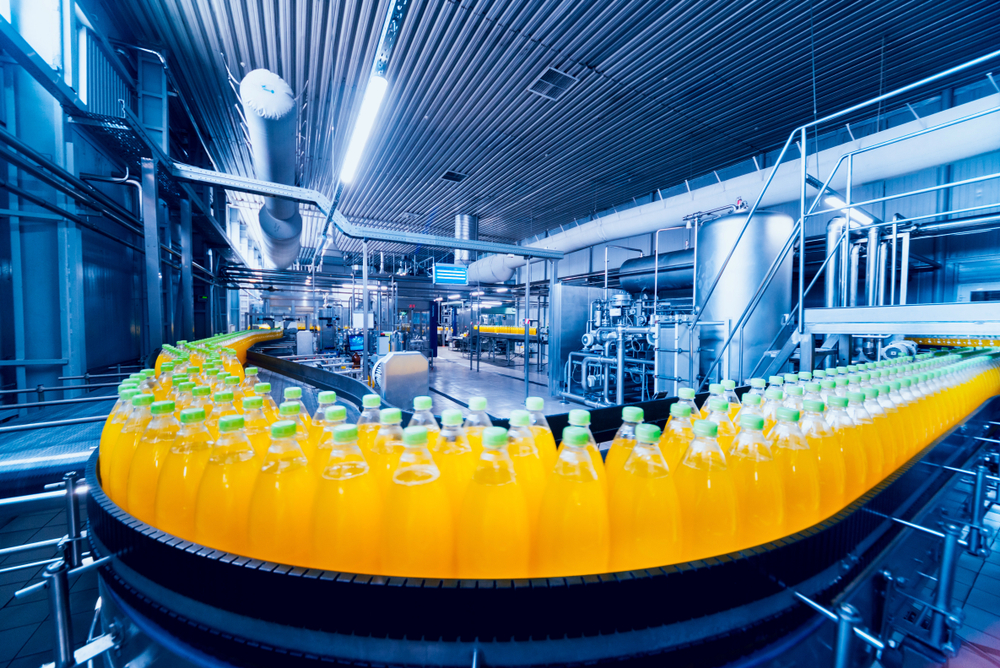
Image Credit: Roman Zaiets/Shutterstock.com
Various types of nanotechnologies have transformed many aspects of the food industry, ranging from its processing to how these products are packaged and preserved. As this technology continues to advance, it will inevitably have a tremendous impact on the safety, taste and production rates of water and many other types of beverages distributed throughout the world.
An Overview of Nanotechnology
By definition, nanotechnology is the manipulation of materials and their properties at the nanoscale, typically within the size range of 1 to 100 nanometers (nm).
The transformation of materials to the nanoscale creates a high surface area that enhances physical attributes such as magnetic, optical or electrical properties. As the science behind nanotechnology continues to advance, researchers anticipate that its effect on both fabrication and service industries throughout many different sectors will be massive. Within the food and beverage industry alone in the United States, the nanotechnology market already has an estimated net value of $20.4 billion USD as of 2020.
How is Nanotechnology used for Beverages?
Nanotechnology is widely used throughout the beverage industry for several different purposes.
One of the most common applications of nanotechnology in beverages can be found in the treatment and purification of water. Another nanotechnology application in beverages includes nanoemulsions, which can be found in many standard soft drinks, fortified waters, juices, or dairy products.
Improving Water Quality
The widespread availability of clean water is imperative for maintaining global health and the overall economic development of growing populations. Unfortunately, several factors contribute to a lack of clean water throughout the world, including an increased demand due to the exponential rise in population and climate change, which has caused droughts and saline intrusion to grow in their frequency in coastal areas.
Water pollution, which can occur in the form of both natural contaminants, including pathogenic microorganisms and synthetic chemicals such as heavy metals, threatens water safety in many places around the world.
Taken together, it is estimated that these factors contribute to over 650 million people around the world who do not have access to safe water. Aside from water scarcity, poor water quality and the lack of appropriate sanitation systems cause one child under five years of age to die every two minutes from preventable diarrheal diseases.
Despite these global issues, there are numerous opportunities in which nanotechnology can enhance the efficiency of water treatment and wastewater reuse to improve the quality of water supplies throughout the world.
For example, the coating of sand beads, which are often used alone to remove colloids and other suspended solids such as bacteria from water supplies, with nanoscale magnetite has been shown to enhance the sand's absorption capacity and separate any magnetite fines that might elute during filtration processes.
Nanotechnology has also been successfully used to enhance the disinfection of water supplies through photocatalytic oxidation. Moreover, nano-photocatalysts can be incorporated into this advanced oxidation process to increase the adsorption of organic pollutants near photocatalytic sites. This enhances the water treatment process's selectivity while simultaneously improving the utilization efficiency of reactive oxygen species (ROS).
Nanoparticle production systems in the industry today
Nanoemulsions in Drinks
A nanoemulsion can be defined as a colloidal suspension within the size range of 50 to as high as 1000 nm. Any beverage that contains small oil droplets dispersed throughout the drink can be classified as a beverage emulsion. However, when this fraction of oil droplets is within the nanoscale range of less than 100 nm, it is classified as a nanoemulsion.
Lipid nanoparticles are increasingly used in nanoemulsions as protective delivery systems for various beverage components, including flavors, colors, antioxidants, antimicrobials, nutrients, and nutraceuticals.
As compared to other potential emulsifying agents, lipid nanoparticles protect these components from unwanted degradation while simultaneously increasing their bioavailability and/or performance.
Lipid nanoparticles also enhance the physical stability of encapsulated components that would otherwise be vulnerable to gravitational separation and aggregation. Some examples of lipid nanoparticles that can be used for these purposes include micelles, vesicles, oil droplets and fat crystals, all of which can vary in composition, structure and diameter when utilized for a nanoemulsion.

 What nanomaterials equipment are on the market today?
What nanomaterials equipment are on the market today?
Improving Hygiene of Drinks
In addition to its use for water purification and treatment systems, nanotechnology has also been widely used throughout the beverage industry to ensure drinks' hygiene safety before distribution to consumers. For example, milk products have a neutral pH and high-water activity, creating an ideal environment for microbial growth. Milk products must be tested for the presence of different pathogens, which can be achieved through polymerase chain reaction (PCR), spectroscopy methods, and multisensory techniques.
Gold and magnetic nanoparticles have been incorporated into immunosensors and surface-enhanced Raman spectroscopy (SARS) systems to overcome some of the techniques’ limitations. Such technological advancements have allowed milk pathogen tests to be completed faster and enhance test sensitivity to ensure consumer safety.
References and Further Reading
Chaturvedi, S., & Dave, P. N. (2020). Chapter 5 – Application of Nanotechnology in Foods and Beverages. Nanoengineering in the Beverage Industry Volume 20: The Science of Beverages. 137-162. doi:10.1016/B978-0-12-816677-2.00005-3.
Cerquiera, M. A., & Pastrana, L. M. (2019). Does the Future of Food Pass by Using Nanotechnologies? Frontiers in Sustainable Food Systems. doi:10.3389/fsufs.2019.00016.
Alvarez, P. J. J., Chan, C. K., Elimelech, M., et al. (2018). Emerging opportunities for nanotechnology to enhance water security. Nature Nanotechnology 13; 634-641. doi:10.1038/s41565-018-0203-2.
Priyadharshini, P., Amalnath, V., Perumal, A. B., et al. (2020). Chapter 15 – Nanodevices for the detection of pathogens in milk. Nanotechnology in the Beverage Industry. 435-469. doi:10.1016/B978-0-12-819941-1.00015-8.
Disclaimer: The views expressed here are those of the author expressed in their private capacity and do not necessarily represent the views of AZoM.com Limited T/A AZoNetwork the owner and operator of this website. This disclaimer forms part of the Terms and conditions of use of this website.